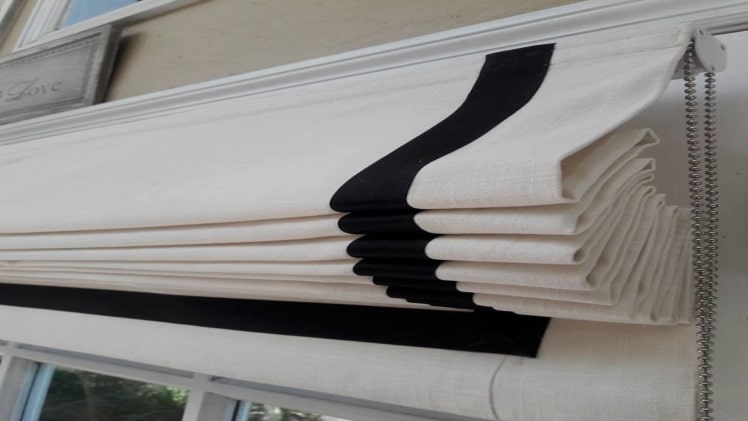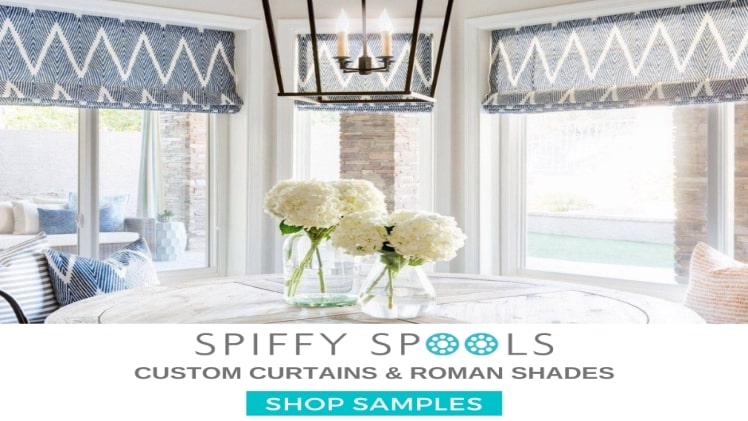Every home has windows and every window in a home requires some type of covering to control light inflow and privacy. Custom roman shades are a popular window covering treatment that has been around for over 2000 years. Roman shades, of course, evolved with time to suit householder needs. In this article, we give you an overview of this classic home furnishing that has stood the test of time.
What are roman shades?
Roman shades are flat fabric panels, usually lined, that can be pulled up and down with a cord on the side. When raised, the flat fabric folds into neat pleats to let in light and enable views. When lowered, it unfolds and spreads flat to cover the window to block light and views.
Roman shades’ origin-
In ancient Roman times, people hung wet cloth over windows to minimize dirt, construction debris, and sunlight from coming into their living areas. Gradually, this functional piece of cloth acquired aesthetic dimensions. People started experimenting with fabrics, patterns, and colors to beautify their windows. Thus, the original roman shades were born.
Changing with time
With time, roman shades evolved to become more and more user-friendly. Vertical cords were added to raise and lower the shades easily. Now we even have remote controlled roman shades that rise and descend at the press of a button.
So what makes Roman shades such a classic
Roman shades have a lot going for them. Like custom curtains and blinds, they reduce light and sound penetration and add privacy to the space. Sophisticated and elegant, roman shades do not hog room space, unlike voluminous drapes. Their neat and streamlined look works with most major décor styles. Easy to maintain, these can be made in almost any fabric and can work for almost any space. Last but not the least; roman shades can add visual interest to a space through their prints, weaves, and color.
What are the major types of roman shades?
There are three key styles of roman shades.
Flat fold shades with front slats – This is the standard type where seams and slats can be seen on front when the shade is in the down position. When raised, the fabric stacks into neat folds.
Flat fold shades with back slats – These roman shades also stack into neat pleats when raised but the slat and seam system sewn into the lining is not visible from inside the room.
European or relaxed style – These shades have the lower edge stacking into curves or scallops for a romantic, not-so-formal look.
Next comes the mounting system
Unlike curtains that can only be mounted outside the window sill, there are two ways that roman shades can be installed on home windows – inside the window frame or outside the window frame.
Outside mounted roman shades – Just like custom curtains, the hanging system in this mount type is installed a few inches above the window’s top edge. It can also extend a few inches on either side for adequate coverage. In this mount, the shade size can be fairly flexible. This style works when you want to hide your windows’ flaws, or create a higher ceiling illusion, or want the outside view to be fully visible.
Inside mounted roman shades – This mounting system fits the shade inside the window recess. For this reason, these are tailored to precise measurements and need some depth in the window for mounting and fitting. The inside mount roman shades style works if you want a custom tailored look, have window trims and moldings worth showing off, and the window has sufficient depth to fit the shade structure. This mounting style doesn’t work if your window is too shallow or has rounded upper edges.
What fabrics work for roman shades?
Any fabric – light or heavy – that pleats well into folds can be used for creating roman shades. Linen and cotton are light fabrics that create crisp folds, diffuse light, and give an airy feel. Wool, chenille and velvet are heavier fabrics that give a sumptuous look, block light, and go well with traditional decors. Cotton-polyester blends too work well for these window treatments.
What fabrics do not work for roman shades?
Any fabric that’s too stiff to pleat doesn’t work with roman shades. Fabrics with stretching properties, oilcloth, PVC, and leatherette (fake leather) aren’t recommended.

Some points to remember when choosing roman shades for your home
- Preferably use a lining to increase the life of your roman shades. Lining not only protects the fabric from fading, it also helps hide dowels and tape channels, and gives stability and shape to the shades.
- Hang roman shades of lighter colors on sun-facing windows to avoid the sun bleached effect on their fabric.
- Use blackout lining in your bedroom’s roman shade to block out external light for sounder sleep.
- Use polyester-blend fabrics with bold prints in roman shades for bathrooms and kitchens. Such fabrics dry quickly. Bold prints also minimize any blotches left by drying splashes.
- In humid climates, keep some space between the shade fabric and the window pane to discourage any mold issues.
- If you have any tiny tots at home, make sure the cord system is looped and secured at a sufficiently high spot so that the child may not tug or pull it. You can also do away with cords and go for remote controlled shades.

